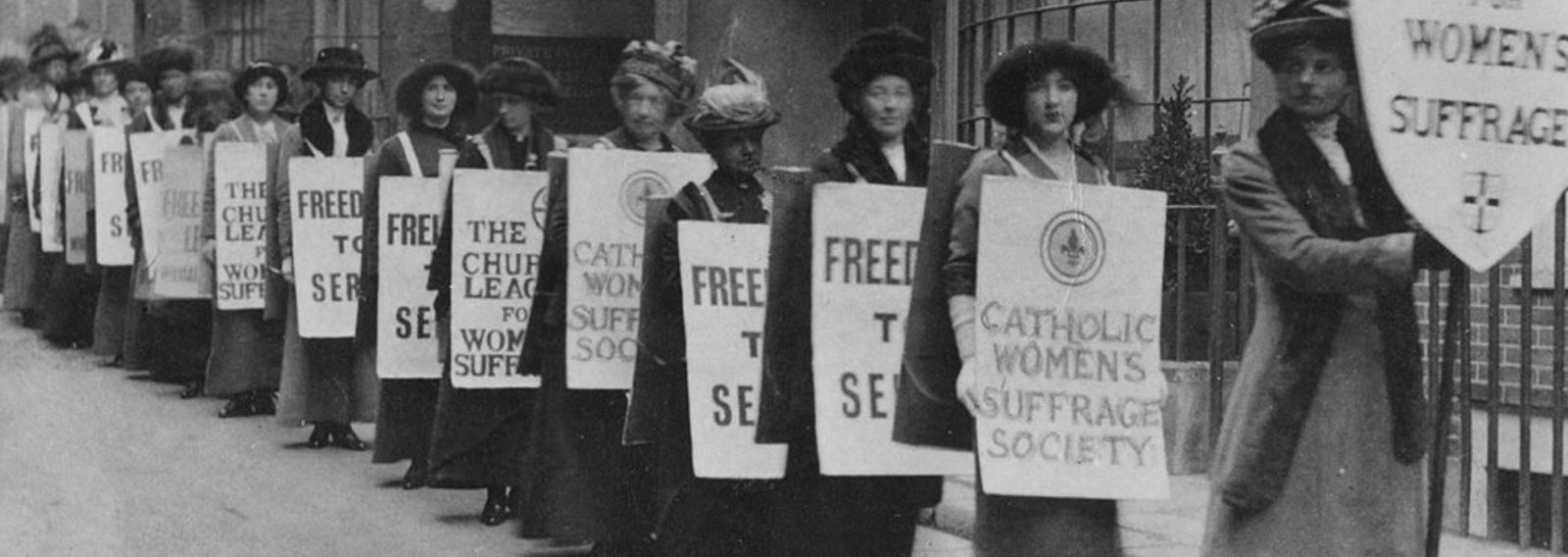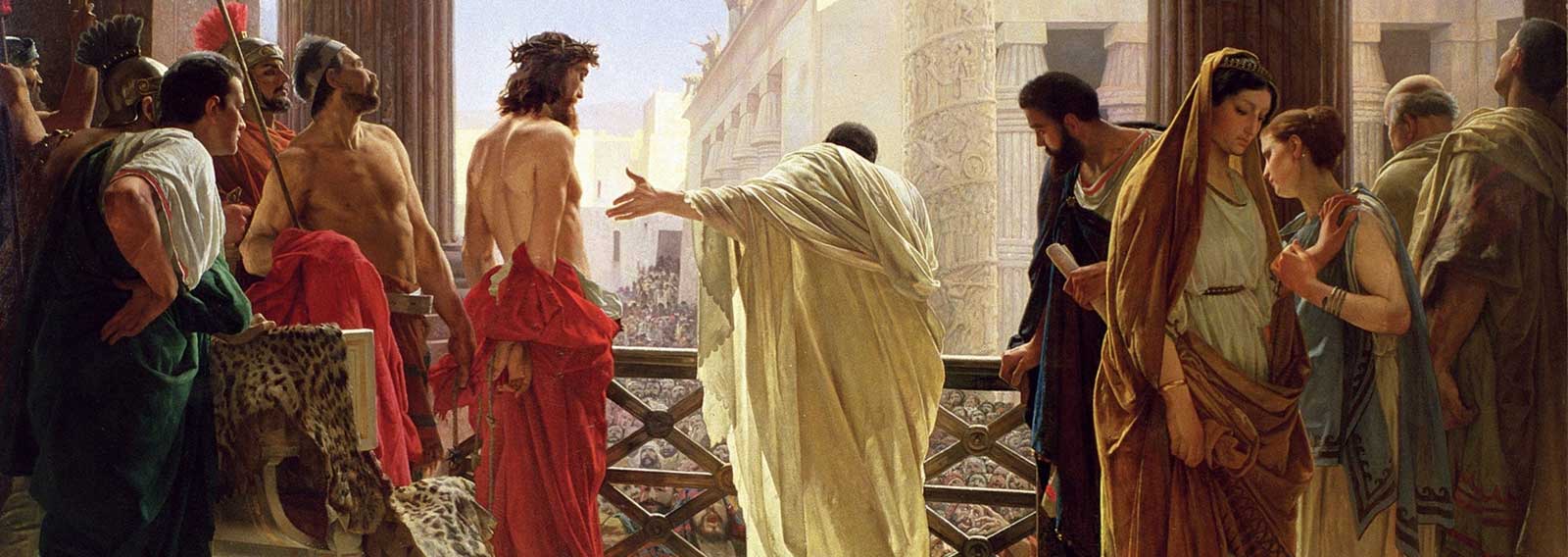Continued on from Part A: Was Feminism A Christian Idea?
Let me show you some examples of why it is patently absurd, ahistorical, and even contradictory to the Bible, to suggest the biblical era did not tolerate female religious leaders.
The first comes from the Old Testament. We read in 1 Kings 16:29-33:
“In the thirty-eighth year of Asa king of Judah, Ahab the son of Omri began to reign over Israel, and Ahab the son of Omri reigned over Israel in Samaria twenty-two years. 30 And Ahab the son of Omri did evil in the sight of the Lord, more than all who were before him. 31 And as if it had been a light thing for him to walk in the sins of Jeroboam the son of Nebat, he took for his wife Jezebel the daughter of Ethbaal king of the Sidonians, and went and served Baal and worshiped him. 32 He erected an altar for Baal in the house of Baal, which he built in Samaria. 33 And Ahab made an Asherah. Ahab did more to provoke the Lord, the God of Israel, to anger than all the kings of Israel who were before him.”
1 Kings 16:29-33
Now, you may wonder why I included this example. Well, Jezebel is in effect a cultic priestess/prophetess, as well as a Queen of Israel. This was not an unheard-of role in the ancient world. “Best known is Um-Astarte, the mother of King Eshmun-Ezer II of Sidon (about 500 BCE, KAI 14.15), who was priestess of Astarte.”[1] Though I disagree that she is the best known. Though not officially referred to as priestesses Jezebel is more famous, and Olympias the wife of Philip II of Macedon and mother of Alexander is certainly nearly as famous as Jezebel. We read about Olympias that,
A few nights after their wedding, Philip witnessed Olympias sleeping with snakes, presumably due to her being a devoted worshipper to a snake cult for Dionysus. Regardless, after this incident Philip lost affection for her. Plutarch notes that Philip did not sleep with her after that “because he feared that some spells and enchantments might be practiced upon him by her, or because he shrank from her embraces in the conviction that she was the partner of a superior being.” [2]
Plutarch, Lives, 464, John Dryden
Olympias may not have had the official title of priestess, but like Jezebel, she was one in effect. Serpents were a continual theme in ancient fertility cults, associated with many gods, including Asherah, which is relevant also to Jezebel, who encouraged Asherah worship in Israel. Sending religiously trained and astute women into the harems of foreign kings, was one way in which members of these royal households could influence other nations. An ancient form of foreign policy if you will. Hence the proscriptions for Israelite men from marrying such women. They were dangerous to the righteous standard of the land. We see many examples of kings marrying such women and falling into idolatry, Solomon being probably the most famous example.
This did not just affect those in power, either. We read in Numbers 25:1-3:
“While Israel lived in Shittim, the people began to whore with the daughters of Moab. 2 These invited the people to the sacrifices of their gods, and the people ate and bowed down to their gods. 3 So Israel yoked himself to Baal of Peor. And the anger of the Lord was kindled against Israel.”
The idea that women could take the initiative or lead in pagan religion is attested to both within the Bible and outside the Bible in various cultures of the era. In some places female priests were rarer, in others they were more common, and to some degree there is debate.
Regarding the biblical era Dijkstra notes, “Only in texts from around Carthage priestesses occur frequently. A high-priestess (rb khnt) and even a female head of the priesthood (rb khnm KAI 95) are mentioned, but perhaps this was a development outside the West Semitic religious context.”[3] However, this is debatable, as we read in the Scriptures, which were situated in Semitic lands, there are many references to both male and female cult prostitutes. For example:
“The godless in heart cherish anger; they do not cry for help when he binds them. 14 They die in youth, and their life ends among the cult prostitutes.”
Job 36:13-14
“I will not punish your daughters when they play the whore, nor your brides when they commit adultery; for the men themselves go aside with prostitutes and sacrifice with cult prostitutes, and a people without understanding shall come to ruin.”
Hosea 4:14
Scholars can tend to favour extra-biblical sources over biblical sources, viewing the Bible as more polemical than factual. But this attitude is often proven wrong by subsequent discoveries. These women, and men, were acting in a priestly role, they were “ordained, female cult officials.”[4]
“We know that the fertility cult persisted in ancient Israel by its frequent condemnation by the prophets. Throughout the ancient world, it venerated the agricultural goddess of fertility, known in different locations by various names as Aphrodite, Asherah, Ishtar, Astarte, etc…
…It was thought that the fertility of humans, crops and cattle was the result of the sexual union of the gods, the sacred marriage or hieros gamos. The blessings of their union were communicated through its ritual reenactment by the worshipper and a temple prostitute. The Bible associates these male and female prostitutes, called ‘holy ones’ (qādēsh and qedēshah), with the goddess Asherah.”[5]
Wilson, Andrew, “The Sexual Interpretation of the Human Fall”. Reprinted from: Unification Theology in Comparative Perspectives, edited by Anthony J. Guerra – (New York: Unification Theological Seminary, 1988), 51-70; p5.
It is obvious the Jezebel was incredibly skilled in her role, because the writer of 1 Kings 16 notes that Ahab fell into not just worshipping the manmade religion of Jeroboam, but after his marriage to Jezebel he became a devotee of the Phoenician god Baal (sometimes a specific deity, sometimes a general term for many chief deities, as Baal means ‘Lord’), and made an Asherah. An Asherah is both a deity and a totem pole or sacred tree.[6] Worship of this deity would involve sacred grove and sex rituals not unlike this description of proto-feminist cultic worship in Europe again from The Complete History of the Suffragette Movement:
“Freedom for the peasants was found alone at night. Known as the Birds of the Night, Foxes and Birds of Prey, it was only at these night assemblages they enjoyed the least happiness or security. Here, with wives and daughters, they met together to talk, of their gross outrages. Out of these foul wrongs grew the sacrifice of the ‘Black Mass,’ with woman as officiating priestess, in which the rites of the Church were travestied in solemn mockery, and defiance cast at that heaven which seemed to permit the priest and lord alike to trample upon all the sacred rights of womanhood in the names of religion and law. During this mocking service a true sacrifice of wheat was offered to the Spirit of the Earth who made wheat to grow, and loosened birds bore aloft to the God of Freedom the sighs and prayers of the serfs asking that their descendants might be free. We can not do otherwise than regard this sacrifice as the most acceptable offering made in that day of moral degradation, a sacrifice and prayer more holy than all the ceremonials of the Church.”[7]
Stanton, Elizabeth Cady (et. al.) 2017, The Complete History of the Suffragette Movement – All 6 Books in One Edition) The Battle for the Equal Rights: 1848-1922, Musaicum Books. Kindle Edition. Chapter 15.
This “sacred grove” worship was common in ancient Israel. Isaiah 57:4-5, “Are you not children of transgression, the offspring of deceit, 5 you who burn with lust among the oaks, under every green tree…” Or Jeremiah 2:20, “For long ago I broke your yoke and burst your bonds; but you said, ‘I will not serve.’ Yes, on every high hill and under every green tree you bowed down like a whore.” It was explicitly forbidden for Israel to copy this practice of the ancient pagans; Deuteronomy 12:2, “You shall surely destroy all the places where the nations whom you shall dispossess served their gods, on the high mountains and on the hills and under every green tree.” And Deuteronomy 16:21, “You shall not plant any tree as an Asherah beside the altar of the Lord your God that you shall make.”
Of course, it was not the precise same thing, because these rituals are separated by culture, language, and specific intent, but in essence, these proto-feminists were reviving ancient Satanic/pagan practices with their own cultural spin on them. This was a form of worship that was highly dependent on female priests, whether in the ancient or modern world.
The matriarchal nature of this religion of Asherah is incredibly clear:
“The loss of goddesses was the price Israel had to pay for its worship of one God. Especially for Israelite women this loss must have been painful. Hitherto goddesses played a key role with regard to the—in those days—all-important issue of fertility of women as well as the protection of mother and child during pregnancy. It must have been far from easy for women to entrust even these specific tasks to the one God YHWH-El.”[8]
Korpel, Mario C.A. 2001, “Asherah Outside Israel” Only one God? : monotheism in ancient Israel and the veneration of the goddess Asherah, Bob Becking editor. London ; New York : Sheffield Academic Press ; 2001; p146.
So much for there being no concept of women in significant roles in religion in the ancient world. The ancient world was very patriarchal in many ways, but the picture is more complex. There were often strong undercurrents of matriarchal religious ideology, and in some places, it could even rise to dominance. Even where it was not dominant, women like Jezebel and Olympias could wield significant influence and power.
And wield power Jezebel did. She had incredible influence over the religion of ancient Samaria, 1 Kings 18:3,19:
“And Ahab called Obadiah, who was over the household. (Now Obadiah feared the Lord greatly, 4 and when Jezebel cut off the prophets of the Lord, Obadiah took a hundred prophets and hid them by fifties in a cave and fed them with bread and water.)…19 Now therefore send and gather all Israel to me at Mount Carmel, and the 450 prophets of Baal and the 400 prophets of Asherah, who eat at Jezebel’s table.”
Jezebel was clearly the head of Samaria’s religious institution in all but name in Ahab’s regime. She had the power to disband and really dismember the godly prophets, and replace them with a rather large circle of loyal prophets who dined not with Ahab, but with her. In modern parlance, we would say that clearly, Jezebel wore the pants in that relationship.
In her role as “head priestess/prophetess” and Queen, she shows that she absolutely dominated the Kingdom of Samaria for a time. 1 Kings 21:25-26, “(There was none who sold himself to do what was evil in the sight of the Lord like Ahab, whom Jezebel his wife incited. 26 He acted very abominably in going after idols, as the Amorites had done, whom the Lord cast out before the people of Israel.)”
When people say that the culture of the day, and by that I mean the era of the Scriptures, which granted is a very large window, did not empower women, they are certainly correct in some contexts, and definitely wrong in others. Women did not hold raw power as much as men, Jezebel is a rarity in this respect. But women DID hold religious power, often, and even in other areas they did have a power of their own. It was more underhanded, and less direct, but no less real. I mean Olympias did get her son on the throne after all. As noted, this woman was remarkably similar to Jezebel; a powerful sorcerer priestess-like woman who even made Philip of Macedon nervous with sweat.
Here is a powerful account of Asherah, which highlights several things; the power of a female deity, the nature of how women can overrule their husbands, and the fact that even ancient patriarchal cultures recognized the reality of matriarchal power. This account is about Baal and his consort Anat desiring authority from El for Baal to have his own palace, and their approach to Asherah to help him get it:
“After a while Asherah asks the couple for the reason of their visit accompanied with such costly presents. Anat is the one who replies. Her husband Baal has no palace of his own, he has to make do with quarters in the palace of his father-in-law El, a situation that has to be changed, because every real god is supposed to have his own palace. Already earlier Anat had begged El directly for a palace for Baal but apparently without lasting succes. Now she is requesting her mother to intercede for Baal with her father El. It is surely remarkable that in Ilimalik’s representation of the divine world male deities were the formal rulers, but goddesses determined the real course of events!…
…With a formal phrase attested more than once she praises his intellectual, not his physical prowess. At the same time Asherah affirms that she has ruled out her husband as king of the gods. Apparently she regards her son-in-law Baal as the candidate to replace him. El does not protest. Asherah succeeds in convincing El to give his permission for the building of a palace for Baal. Apparently she has a decisive influence on major decisions of her husband, the king of the gods. Later on in the myth of Baal Asherah determines El’s choice of a successor for Baal, in the same way as the biblical Bathsheba does for her son Solomon (1 Kgs 1)…
…It is likely that this too reflects the situation on earth where queens, especially queen-mothers, often influenced the political choices of their royal husbands and in many cases decided who would be the next on the throne…
…The word of queen-mother Asherah is followed blindly. The author of the myth, Ilimalik, apparently wants to describe her as the real power behind the ageing king of the universe.”[9]
Ibid, pp135-136
This account of the power and direction of Asherah is every bit as subversive as anything written by one of Faxneld’s 19th Century satanic feminists. This could also be an inspiration for an episode of Everybody Loves Raymond, where the main character Ray is constantly torn between following the lead of his wife or the whim of his mother. But more importantly, it shows that the archetypal husband-dominating woman, Jezebel, was not an anomaly in the ancient world, she was a common reoccurrence. In fact note this comment by Jezebel to her husband Ahab in the Scriptures;
“But Jezebel his wife came to him and said to him, “Why is your spirit so vexed that you eat no food?” 6 And he said to her, “Because I spoke to Naboth the Jezreelite and said to him, ‘Give me your vineyard for money, or else, if it please you, I will give you another vineyard for it.’ And he answered, ‘I will not give you my vineyard.’” 7 And Jezebel his wife said to him, “Do you now govern Israel? Arise and eat bread and let your heart be cheerful; I will give you the vineyard of Naboth the Jezreelite”.
1 Kings 21:5-7
Here Jezebel shows us who the true power was in Israel, her, not her husband. It is surely not a coincidence that Jezebel was an advocate of a god-like Asherah because, in the Canaanite mythology, Asherah had come to dominate the creator God, El, just as Jezebel had dominated Ahab, and also just as she had introduced Aherah and Baal to replace and dominate Yahweh, or El Shaddai. This is a clear example of Satanic Feminist subversion, by Faxneld’s definition is his book.
There is a reason Jezebel is seen as an archetype of feminist religious power. She represented a reality in some parts of the Ancient Near East that is picked up by modern feminists. In condemning Asherah worship and Jezebel and women like her, the Bible is explicitly condemning what we would later call feminism, or women leading men. To unleash Asherah (or Ishtar, or Aphrodite, or Astarte, etc., etc.) worship on a society was to unleash feminism on a society and the chaos that causes.
So, we can see that the Bible, and surrounding cultures, acknowledge the reality of women being powerful in both religion and statecraft, and the Bible challenges it directly. But there is another example of this in the New Testament, and it is a woman also called Jezebel.
We’ll examine how the New Testament era is consistent with the Old Testament teaching in the next installment.
[1] Dijkstra, Meindert 2001, “Women and Religion in the Old Testament”, Only one God? : monotheism in ancient Israel and the veneration of the goddess Asherah, Bob Becking editor. ; London ; New York : Sheffield Academic Press ; p181.
[2] Mutch, Alexa 2017, “Behind every great man there is a great woman”, Women in Antiquity, accessed 8/07/2021
[3] Dijkstra, Meindert 2001, “Women and Religion in the Old Testament”, Only one God?: monotheism in ancient Israel and the veneration of the goddess Asherah, Bob Becking editor. ; London; New York: Sheffield Academic Press; p181.
[4] Dijkstra, Meindert 2001, “Women and Religion in the Old Testament”, Only one God?: monotheism in ancient Israel and the veneration of the goddess Asherah, Bob Becking editor. London; New York: Sheffield Academic Press; p182.
[5] Wilson, Andrew, “The Sexual Interpretation of the Human Fall”. Reprinted from: Unification Theology in Comparative Perspectives, edited by Anthony J. Guerra – (New York: Unification Theological Seminary, 1988), 51-70; p5.
[6] Korpel, Mario C.A. 2001, “Asherah Outside Israel” Only one God?: monotheism in ancient Israel and the veneration of the goddess Asherah, Bob Becking editor. London; New York: Sheffield Academic Press; 2001; p141.
[7] Stanton, Elizabeth Cady (et. al.) 2017, The Complete History of the Suffragette Movement – All 6 Books in One Edition) The Battle for the Equal Rights: 1848-1922, Musaicum Books. Kindle Edition. Chapter 15.
[8] Korpel, Mario C.A. 2001, “Asherah Outside Israel” Only one God?: monotheism in ancient Israel and the veneration of the goddess Asherah, Bob Becking editor. London; New York: Sheffield Academic Press; 2001; p146.
[9] Ibid, pp135-136






















